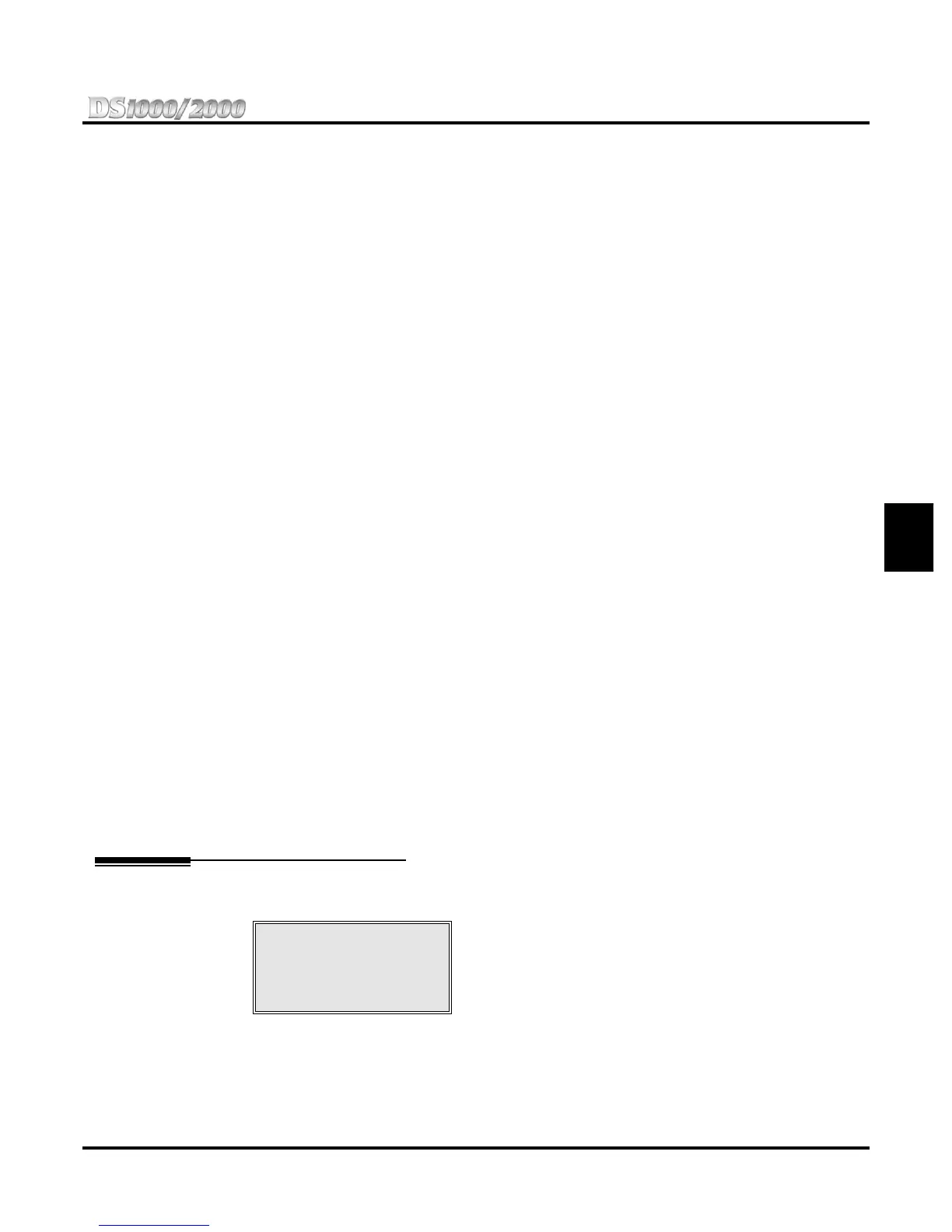Section 3: Features
DS1000/2000 Product Description Section 3: Features ◆ 115
3
The system allows the following types of transfers:
● Screened Transfer
The transferring user announces the call to the destination before hanging up.
● Unscreened Transfer
The transferring party extends the call without an announcement.
The system cannot Transfer Intercom calls.
Distinctive Flash Rate on Transfer Recall
Transfer recall features a distinctive flash rate for line keys. This allows the keyset extension user to
easily differentiate new calls that are ringing from transferred calls that are recalling.
Enhanced Recall Display
The Transfer recall display identifies:
● The type of call recalling the extension.
● The extension to which the call was initially transferred.
Handsfree Transfer
Handsfree Transfer allows an extension user to Transfer a trunk call directly to the speakerphone of
a co-worker.
Feature Quick Steps
To Transfer your call:
1. Do not hang up + Press ICM.
You can press your Call Coverage or Hotline key instead of ICM.
2. Dial your co-worker’s extension, press a DSS key, dial a Ring Group master number, or dial a
UCD Hunting group master number.
3. Announce call to make a Screened Transfer, or hang up to send the call through Unscreened.
To Transfer your call to a co-worker’s mailbox:
1. Do not hang up + Press ICM.
You can press your Call Coverage or Hotline key instead of ICM.
2. Dial your co-worker’s extension + Press MW + Hang up.
Trunk Group Routing
Availability: All versions.
With Trunk Group Routing enabled, an extension user can just
press ICM and dial 9 to place a trunk call. Trunk Group Routing
automatically selects the first available trunk in the extension’s
programmed “dial 9” trunk group. This simplifies placing calls in
systems that have a lot of trunks for outgoing calls. Rather than press one of many line keys, the
user just dials 9 instead.
Dial a single code to place a
call over the first available
trunk in a trunk group.

